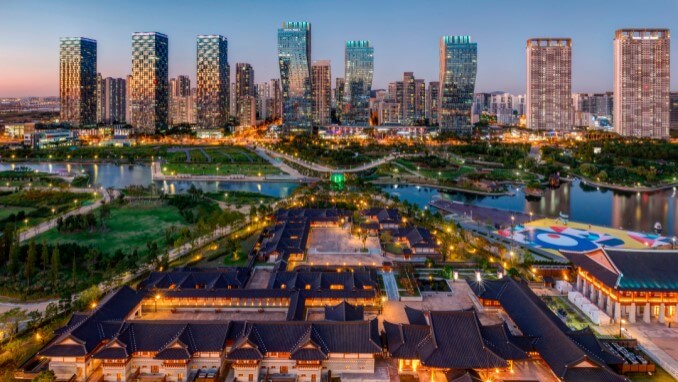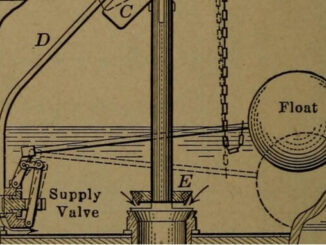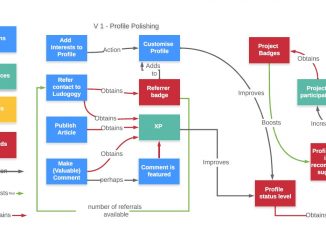
Ludogogy has entered into an agreement with Gamification Journal, based in Seoul, South Korea, for the mutual exchange of articles. This is the tenth of those articles we are publishing and it was in exchange for Viren Thakrar’s article on how to make your learners feel like rockstars.
When I was a child, I enjoyed going to the games arcade and running on deserts and beaches. This game was called ‘OutRun’, a classic game masterpiece. The reason why I still remember this game after thirty years is that ‘OutRun’ gave me real pleasure, beyond just providing competition.
I have memories of driving a sports car in various cities in Europe. The reason why those experiences of playing ‘Outrun’ are important in the context of this article is that small cities that have problems with population decrease and economic downturn can be revived by games like ‘OutRun’.
A small city is not a destination for tourists
When a city loses energy, it doesn’t position itself as a destination that tourist wants to go. This is also related to not offering suitable attractions for tourists by utilizing various assets that small cities have.
Until now, cities have usually only looked at physical development, depending on attracting tourists by building up the infrastructure. So, the unique attractiveness and contents of the city are not differentiated. Although the road, buildings, and parks are invested with many resources and manpower, the numbers of tourists who visit small cities do not increase.
From a non-infrastructure, experiential, perspective, typical gamification such as stamps and selfies was generally used. However, tourists don’t have much interest in those. These kinds of programmes can be experienced in many other cities.
If the experiences presented by cities are almost identical, it is still very likely that tourists choose the large cities, which have more sightseeing and content.
The city’s brand value is not increased just by a slogan or a well-known landmark. The more important thing is the level of recognition. Visitors go to the city because the prestige of the city and the expectation of ‘recognition’. The ‘basics’ of hospitality and simple ownership of landmarks can happen in any city, and do not differentiate. The important thing is for the city to recognise the value of the unique characteristics of that city and what the things that make it attractive. This is how they will lead tourists to have different and more favourable perceptions of the uniqueness of the city.
Merging gamification with city branding
A blend of gamification and city branding can be one approach to giving small cities more energy and appeal to tourists – to compete with larger cities.
Many small cities already have connected various technologies such as Augmented Reality, Virtual Reality, Extended Reality, and metaverse applications which are used in digital games, with city branding. The pace of these changes were accelerated by factors such as the COVID-19 pandemic, and many activities have been moved into digital-based online environments.
City branding has evolved, and now consumers can get city-related content and information without necessarily visiting the city. The city’s assets and technologies are connected to more various, and often free content, beyond the physical infrastructure.
For example, Watson Adventures is a game to explore the city through finding treasures, and Travel Earth is a game which allows ‘visitors’ to travel the city through videos. Ganes such as these are already part in the gamification effort related to city branding.
However, what is important to ask, is how these services can provide pleasure to users, and how these can lead to positive outcomes for the city providing content for the experiences.
The perception of ‘Experience Value’ is what a city should aim to maximise for their (potential) visitors. This includes differentiation – the idea that a particular city can provide an experience which others cannot, and any gamification should be designed to enhance that perception.

Online, Content, Experience value
City branding using gamification has three main considerations. The first one is that it has to make effective use of the digital online environment. So much of life is now firmly embedded into the online ecosystem through social media development, media diversification, and the fact that we now live in the virtual post-COVID-19 era. Online-based activities have fewer time and place restraints, and cost less money.
Although many areas have been transformed by the use of online applications, city-related content is still in the offline sector. Programs for attracting visitors to the real ‘places’ are most popular. Simply ‘reproducing’ images of the city is not the way to effectively utilise digital online environments in this context. The important thing is content.
The second one is that city must focus on ‘content’ showing the city’s unique attractiveness. This process needs to be designed from the users’ perspectives to create a sense of differentiation. Rather than simply reproducing and seeing spaces, it should lead users to have curiosity and participate in those spaces and experiences. The activities should have the focus of making the users want to visit the real cities.
Finally, the experience value of the city should be discovered. Simple ‘Appreciation’ content; images, reviews, videos; have a limit. It is necessary to tap into experiences which can both be remembered, and can prompt pleasurable ‘looking forward to’ planning. There is a place here for devices connected to online environments – augmented reality, virtual reality and other immersive technologies. In addition to asking “What kind of experience can be provided?”, it becomes important also to ask, “What do we want users to feel about the experience?”.
Through the COVID-19 pandemic, the environment has changed fast. In addition to these changes, the tourism market and tourists’ attitudes towards visiting cities have also changed. One of the methods to meet these environmental changes effectively is Gamification.
I still remember driving in the beach and desert with a steering wheel handle in the games arcade. I still have feelings of driving by seeing the cities in the game. If Gamification can be seen not just as a game but as a solution tool to adapt to environmental changes, it can be an opportunity for reversal for small cities in economic crisis.
- Making a small, vibrant city through gamification - 21st October 2022





Be the first to comment